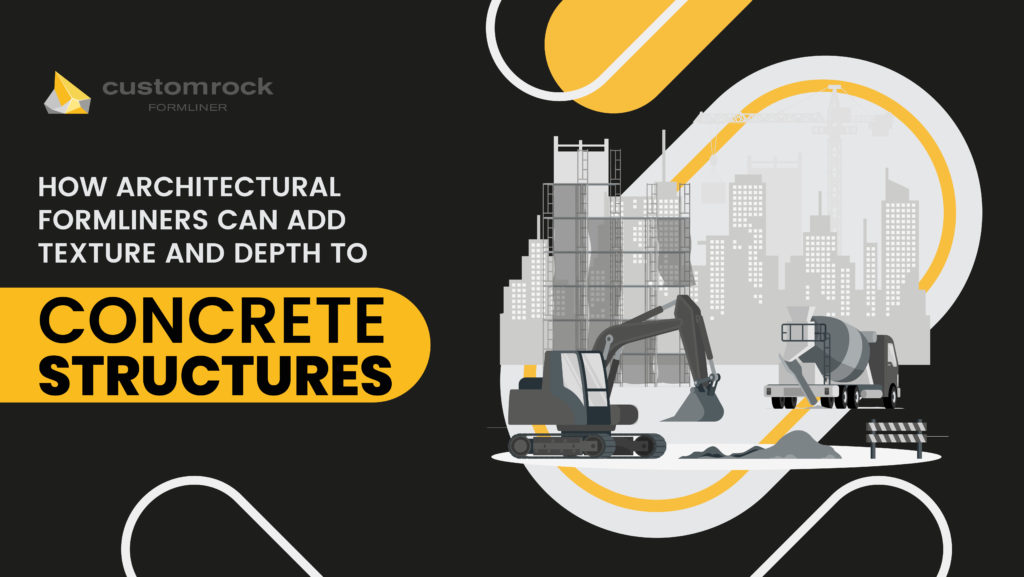TL; DR
Architectural formliners can introduce aesthetics by adding texture and depth to concrete structures that exceed expectations. They create immersive appeal and add more purpose and personality to a project.
Whether it is timeless, rustic-style looks or contemporary designs, the formliners give an ultimate architectural expression to your project that leaves a strong impression.
So if you’re looking to make your next concrete project an example of unique design and architectural excellence, don’t forget to consider architectural formliners for amazing results.
Overview of Architectural Formliners
Formliners are a powerful tool that can help you add texture and depth to an otherwise plain concrete surface. From walls and columns to stairs, benches, and even the exterior of buildings, formliners can be used to create unique elements in combination with other materials or even as stand-alone features.
Architectural formliners give the architect the flexibility needed to break the mundane patterns and allow the designers to add creativity. They can do it using different panel sizes and textures made from either metal or rubberized plastic.
This blog post will explore how different architectural formliners can add texture and depth to any concrete structure to maximize its aesthetic appeal.
What Are Architectural Formliners?
A form line is a reusable surface-forming material that provides decorative finishes on poured walls, columns, beams, and other concrete elements, enabling architects and designers to incorporate unique designs and patterns into their projects.
Architectural formliners are an increasingly popular way to create not just a surface finish, texture, and depth in concrete structures. It provides an economical alternative to expensive finishes.
Formliners, also known as concrete stamps or molds, are made from plastic or rubber materials that feature various patterns or textures.

Types of Formliners
There are several types of formliners are available for creating textured concrete structures. These can range from simple, single-piece designs to more complex multi-piece liners that can be used to create intricate patterns and textures.
Some popular types of architectural formliners include:
ABS
ABS architectural formliners are made from acrylonitrile butadiene styrene, a thermoplastic polymer. They are lightweight, durable, easy to install, and provide clear visual lines. These formliners offer superior dimensional stability and resistance to deformation and can be used in climates with extreme temperatures.
Styrene
Styrene architectural formliners are lightweight, rigid foam plastic resistant to wear and tear. They provide a smooth finish, making them suitable for architectural applications such as façades, columns, concrete walls, and surfaces. Styrene architectural formliners can also easily create intricate patterns, allowing for detailed designs.
Polyurethane
Polyurethane architectural formliners are made from a flexible material that offers superior strength and durability. They can be easily shaped to create intricate, detailed designs and patterns, making them ideal for architectural concrete walls and surfaces.
They are also weather-resistant, making them suitable for outdoor applications in climates with extreme temperatures.
Photoengraved
Photoengraved architectural formliners are made from a durable, photopolymer material that is resistant to wear and tear. They offer superior visual fidelity and replication of detail, making them ideal for architectural applications.
Photoengraved architectural formliners can also be used to create intricate patterns and designs quickly and easily.
How Architectural Formliners Can Add Texture And Depth To Concrete Structures?
An architectural form liner is placed in the wet concrete before it is poured into the forms of a structure, resulting in a wide variety of textures and patterns visible in the finished structure.
Architectural formliners can be used to replicate natural stone, brick, wood, tile, or other materials in the concrete surface. They can also be used to create abstract designs or patterns, such as geometric shapes or organic swirls.
Customization
Formliners can be customized to meet the needs of a particular project. They add visual interest and complexity to commercial, residential, and public works projects. Whether you looking for a more natural look or something more abstract, formliners can help you create stunning results with concrete structures.
Stands Out From the Crowd
Using formliners helps create unique structures that stand out from the crowd and make a statement. For example, they can be used on walls, columns, patios, walkways, and staircases to give the concrete a unique look.

Benefits of Using Architectural Formliners On Concrete Structures
Formliners also provide several practical benefits when used in concrete structures. Such as:
- Architectural formliners can be used to create intricate designs with great detail that would otherwise be difficult or impossible to achieve. This makes them highly versatile and can enable architects and designers to express their creativity cost-effectively.
- They offer strong protection against wear and tear over time and make it difficult for graffiti to stick to the structure’s surface.
- They can also make repairs and maintenance much easier since the texture of the former will match that of the concrete structure. This quality makes them ideal for large-scale projects such as bridges and building façades.
- Using formliners also makes hiding any imperfections or blemishes on the concrete surface easier. In addition, formliners are cost-effective compared to other decorative options for concrete structures.
- Whether looking for natural materials or something more abstract, formliners offer a wide range of options to help you create stunning results with concrete structures.
- Using formliners also gives architects and designers more creative freedom when designing projects. By adding texture and depth, formliners can turn an ordinary structure into something extraordinary.







